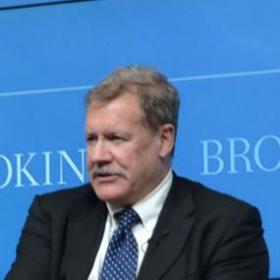
Missile "Umbrellas" for Russia and Europe
Once they were called nuclear umbrellas. For example, in the Cold War, Japan did not have military nuclear forces, but it relied on those of its ally, the United States, to deter any attack on it. Thus, the Americans were said to be holding a “nuclear umbrella” over Japan.
The most serious threat of all was from nuclear-armed ballistic missiles. To address this threat, the United States and the Soviet Union relied in large part on mutual assured destruction and the deterrence imagined to flow from it. The two sides also developed large second strike capability for retaliation as extra insurance. The surprising aspect of this balance of terror was that in 1972 both sides had agreed by treaty to forego large scale development of actual defences against missiles in flight – what is called now ballistic missile defence (BMD). The idea was that by foregoing a comprehensive system of defence against in-flight missiles, the two sides would strengthen mutual deterrence.
The international agenda for BMD is now significantly different. We are a decade into recurring controversies between Russia and the United States over the role of missile defence and tactical nuclear forces in national deterrence strategies. These disputes have been caused in large part by the United States withdrawal in 2001 from the 1972 missile defence treaty mentioned above. In Russian eyes, this move upset the balance between offence and defence in mutual nuclear deterrence since it was made by the Americans to allow them to drive towards a comprehensive system for destroying ballistic missiles in flight. In December last year, NATO announced its intention to set up a comprehensive system for missile defence, and thereby to formalize the emerging American “missile umbrella” over Europe.
Russia indicated then its readiness to work with NATO to create a pan-European system that extends well beyond NATO. The joint political decision has been taken. All parties are now working out if and how that might be executed. If the details can’t be agreed, all say they are prepared to walk away from the original consensus.
One stumbling block is that Russia does not want to be subject to a “missile umbrella” commanded or dominated by Americans. According to a January 2011 report by the U.S. Congressional Research Service, that motivation may be shared by a number of NATO members too.
Another stumbling block is that Russia needs a BMD system with global reach and wants the NATO-Russia joint effort to cover its Asian territory and potential threats across all of Asia. Since the Americans have theatre missile defence systems in East Asia, that should not be too hard. NATO members should readily accept that they can defend better against missiles coming from Asia if they rely on direct Russian involvement in the defence system. A third stumbling block is Russian insecurity about American dominance in BMD technology in coming decades.
The underlying obstacle however is lack of trust. In large part, the insecurity arises from Cold War stereotypes, but there is also a Russian neuralgia caused by American and NATO use of military force for political purposes other than national defence. A strategic signal is needed, one that can sweep away the remnants of the Cold War, address current sensitivities and establish a modicum of trust at an operational level of missile defence. It may need to be as radical as stationing of joint missile defence units on each other’s territory.
But there does have to be a new treaty too, one that re-connects missile defence to broader but contemporary needs of all parties for deterrence. By insisting on a treaty, Russia is not re-living the past, it is very much concerned to obtain some guarantees about its security in the future. NATO could look more closely at how it might benefit from such a treaty.

